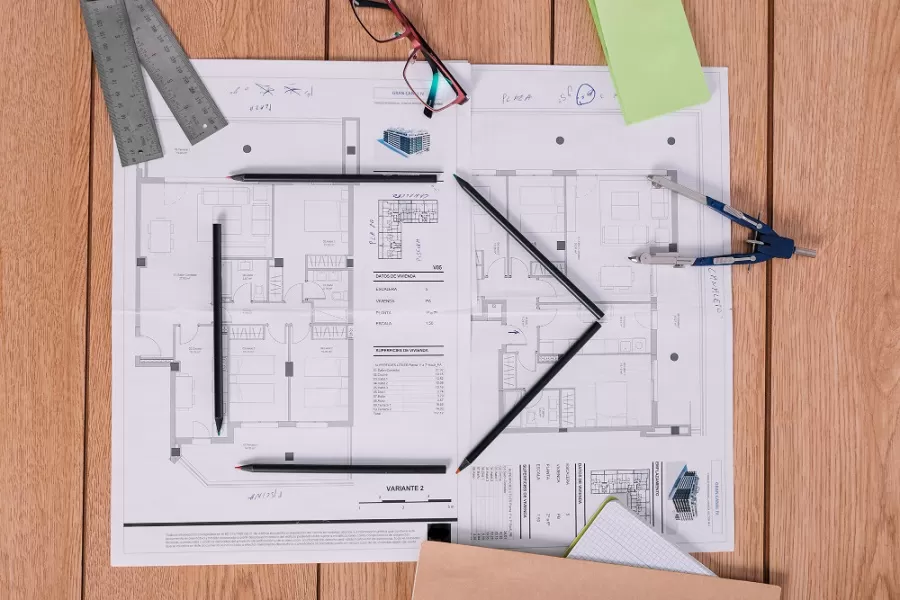When it comes to product manufacturing, accuracy is not just important, it’s non-negotiable. Even the slightest mistake in the shop drawing can lead to costly delays or complete product failure. However, despite using the best CAD design and drafting software for product shop drawing, mistakes still happen, which may lead to costly delays or rework.
Here are the most common shop drawing errors that designers make, along with tips to avoid them. Apart from watching for these errors, it is also important to follow the best shop drawing practices to ensure smooth and accurate manufacturing.
Shop Drawing Errors That Affect Product Manufacturing
1. Incomplete or Missing Information
One of the most common mistakes is submitting shop drawings that are incomplete or lack comprehensive information. Missing dimensions, unclear material specifications, or absent welding details can confuse fabricators and lead to incorrect outputs.
To avoid this mistake, make sure to double-check every essential detail before submission. Professional CAD experts create accurate shop drawings that include:
- Dimensions with clear tolerances
- Material types and grades
- Welding specifications
- Surface finishes and treatments
- Assembly instructions, if required
Here’s our comprehensive shop drawing checklist that you must follow during the drafting and reviewing process to reduce the chances of missing critical information.
2. Poor Dimensioning and Material Tolerance
Incorrect measurements or failure to account for material tolerances (e.g., thermal expansion) can result in poor-fitting components. To avoid this error, while creating shop drawings, it is important to:
- Place dimensions in logical, easy-to-read locations
- Maintain consistency with the units (e.g., don’t mix millimeters and inches)
- Avoid duplicating dimensions and maintain a common reference point
Following ANSI/ASME Y14.5 standards for dimensioning and tolerancing is a best practice to ensure clarity and uniformity.
3. Overcomplicating the Drawing
Adding unnecessary views, excessive notes, or detailing parts to fabrication drawings can lead to clutter. This not only wastes the fabricator’s time but also increases the risk of misinterpretation.
To stay sorted, focus on what’s essential. Include only necessary views (top, front, side, section, etc.), clear details, and specific notes that directly support product design and engineering.
4. Inconsistent or Unclear Notations
Shop drawing errors also arise if symbols, abbreviations, or notes are inconsistent or vary from industry standards.
To avoid mistakes during manufacturing, stick to standard symbols and abbreviations recognized in your industry. Also, include a legend if any non-standard notation is used and make sure to be consistent throughout all drawings. This will help avoid errors on the fabrication floor.
5. Lack of Collaboration with Fabricators
Designers sometimes work in isolation without consulting fabrication experts. This can result in designs that look great on paper but are difficult to manufacture.
Always involve fabricators early in the design process. Conduct design review meetings where shop-floor experts can provide feedback regarding designs, fabrication, material availability, and cost considerations.
Bridging the gap between designers and fabricators can help improve the manufacturing process and reduce costly design changes down the line.
6. Failure to Indicate Tolerances
Tolerances directly impact how parts function, fit, and how much they cost to produce, so it’s essential to communicate them clearly from the start. Without clear information, fabricators are left to guess how precise each feature must be. This can lead to either costly overengineering or poorly fitting parts.
When creating shop drawings, clearly specify tolerances on critical dimensions. Apply general tolerance notes and mention important fits (press fit, sliding fit, etc.) and acceptable ranges.
7. Ignoring Real-World Constraints
When creating shop drawings, it is important to consider real world conditions. Perfect materials, flawless machines, unlimited budgets – are too good to be true.
To avoid mistakes and clashes,
- Make space for material variability and stock sizes.
- Consider machine limitations and shop capabilities.
- Design for ease of manufacturing and assembly (Design for Manufacturability – DFM).
Designing with the real world in mind prevents project overruns and disappointment.
Get It Right the First Time With Enginerio’s Expert Shop Drawing Services
Accurate shop and fabrication drawings lead to smoother production cycles, fewer misunderstandings, and a higher-quality end product. Need help avoiding errors and creating accurate product shop drawings?
Partner with Enginerio. Our experts can help you create accurate, fabrication-ready shop drawings that make your production process faster, easier, and more reliable. Our experienced team pays close attention to every detail so nothing gets missed during the process.
Connect with us to bring your product designs and ideas to life, efficiently and accurately.





